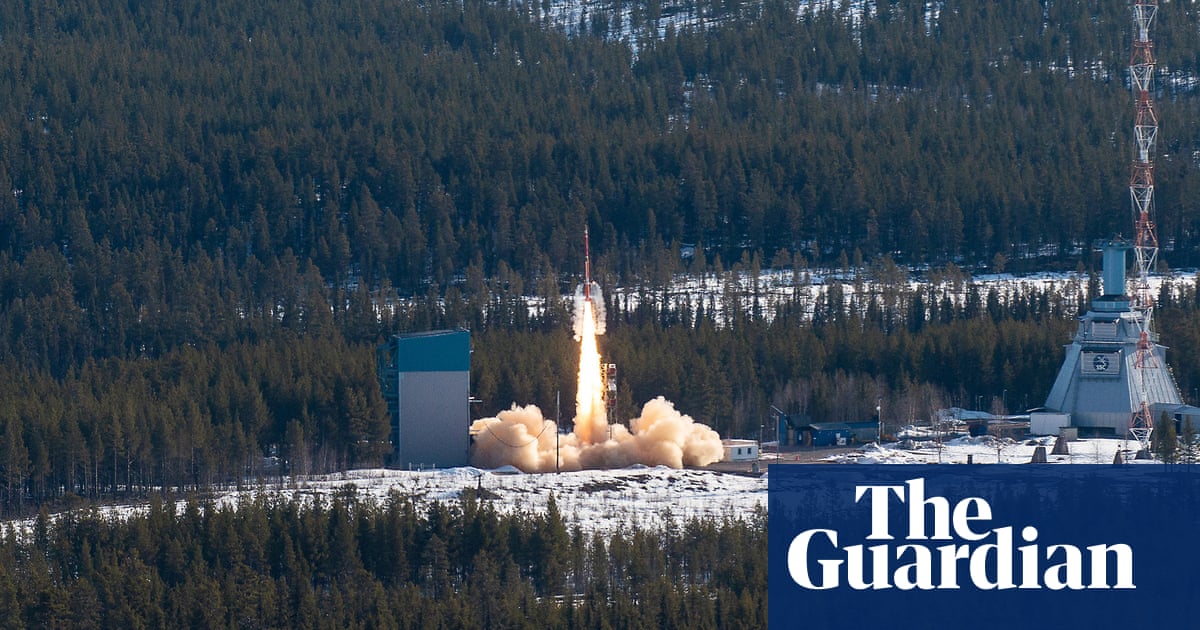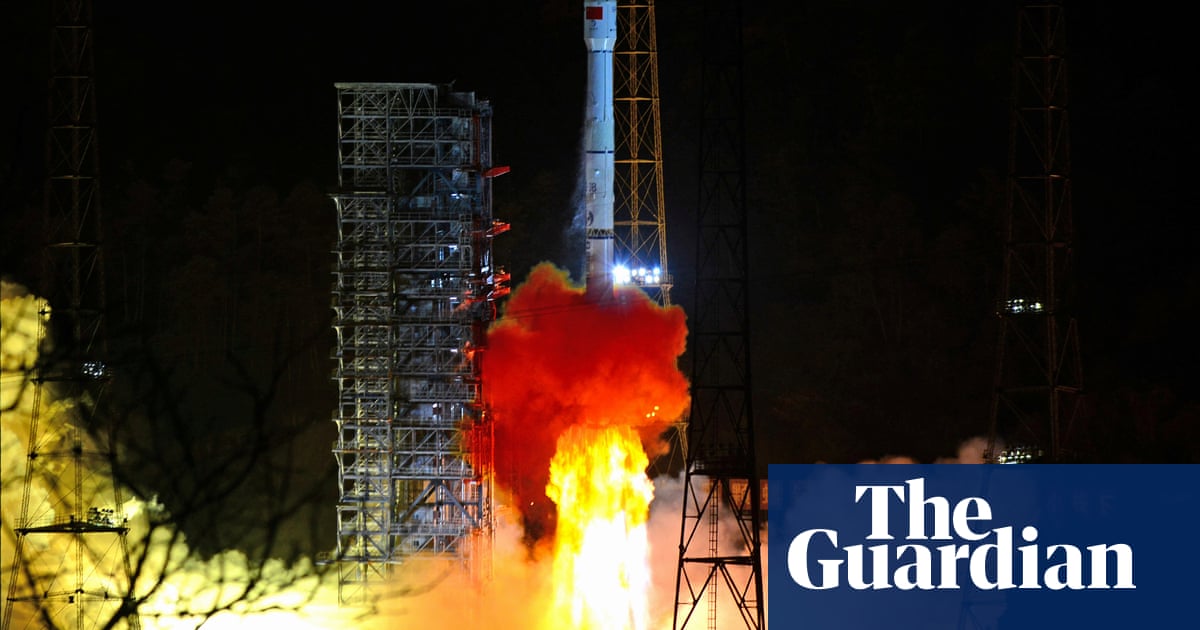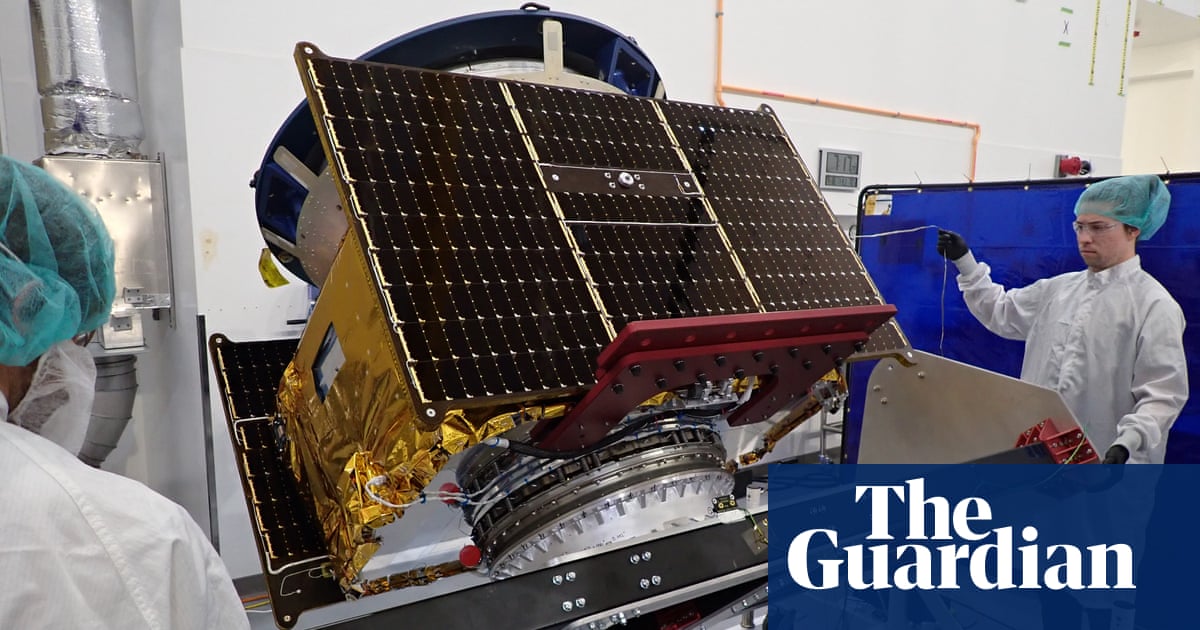
First place is “nice but it’s not necessary”, says Stefan Gustafsson, a senior official at the Sweden Space Corporation (SSC), with a telling chortle. “Other actors are more aiming to be first. Naturally, I think we will be.”
It was an unconvincing show of magnanimity. There is a space race on, a British rival has already spectacularly fallen by the wayside, and the Swedes have every intention of winning.
Among the vast forests of royal green pine and yellowing birch trees in the northernmost part of Sweden – 120 miles north of the Arctic Circle – lies the Esrange space center, a cluster of isolated buildings, concrete launching pads and a scattering of 30-plus large antennae dishes facing into the sky like so many begging bowls.
The understated base, a 40-minute drive east from the similarly unprepossessing mining town of Kiruna, has been operating here in the wilderness since 1966, contributing to the international wealth of scientific research by blasting “sounding” rockets into suborbit, launching large balloons into the stratosphere and picking up and processing data from above.
Once owned by the European Space and Research Organisation, rebadged in 1975 as the European Space Agency, it is today the property of the SSC, a company wholly owned by the state.
It has a worthy history in atmospheric, ionospheric and micro-gravity research but not one, perhaps, to set the pulses racing. The small visitors’ centre is empty. It is more Center Parcs than Kennedy Space Center.
But look at the pace at which the few members of staff on the base are doing their work, and listen to the hum of conversation. Then there’s the whir and crash of diggers lumbering stone around the secure zone before the heavy winter snow falls.
New launch pads are being finalised, complicated liquid-fuel handling systems prepared, and a giant two-hall hangar, not dissimilar in appearance to a medium-sized Ikea, has been erected on the outer periphery of the base.
This Swedish space centre is leading the pack in a fiercely competitive battle to be the first European base outside Russia from which a satellite is launched into orbit. Technological advances and the emergence of micro-rockets have made it possible. A cast of aspirants to be Europe’s “first” are gearing up.
Other frontrunners in the European scramble include the Andøya space centre in Norway and the UK’s SaxaVord rocket base in Unst, Shetland, with others further back in the pack in Iceland, Portugal’s Azores and Spain’s Andalusia.
The last 18 months in Ukraine have added extra urgency to efforts. “One of the problems that was rapidly obvious after the start of the Ukraine war was the lack of launching capability for Europe, heavily dependent on Russia and Baikonur [the Russian launch base in Kazakhstan], and also technical collaboration between the European space agency and Russia,” said Gustafsson, 65, a vice-president for strategy at the SSC who previously held a senior role in the Swedish military. “When the sanctions came in, we had a gap and still have a gap in launching capabilities. We really want to cover that gap.”
The lack of capacity has emerged at a time when there has been an exponential increase in the number of satellite launches globally. In 2022, there were an estimated 6,905 active satellites orbiting Earth – an increase of 2,105 on the previous year. It is estimated 50 satellites are being launched every week to cater for telecommunications, internet infrastructure, Earth observation capabilities and national security demands. About 18,500 small satellites are expected to be launched between 2022 and 2031, compared with 4,600 in the previous decade.
Until now, European actors seeking to launch satellites were dependent on Russia and the European spaceport in French Guiana on the north-eastern coast of South America. Europe’s heavy air traffic and densely populated terrain had traditionally offered few of the necessary conditions. What goes up, sometimes comes down.
For the remains of its suborbital rockets floating to Earth on parachutes, the Esrange base has a huge landing zone of 5,200km², a stretch of territory about twice the size of Luxembourg nestled between Norway to the west and Finland to the east. It is barely inhabited, and the Sami reindeer herders who roam there have been provided with bunkers for use at the time of launches.
But in April, the Norwegian authorities issued an angry statement when an Esrange research rocket malfunctioned and landed in its territory. A cynic might suspect that Norway, with its rival ambitions, had good reason to make a fuss. Gustafsson is diplomatic. “It was really not a danger for anyone,” he said.
But, until now, he concedes, a satellite-loaded rocket launching from Esrange had simply not been viable. The rocket would need to pass over Norway for 15 to 20 seconds with all the concomitant risks. That, however, has all changed. “With the old fashioned technology it could be a risk, with the new technology it is not at all,” said Gustafsson. “It flies up there, over 100km and then goes away. There is less risk than an aeroplane crashing at an airport.”
It remains, of course, a difficult undertaking to blast a satellite into orbit. A request for such launching technology was said to have been put on the table by North Korea’s Kim Jong-un during his recent meeting with Vladimir Putin.
Further compelling evidence closer to home of the complexity of the challenge emerged in January during the calamity in Cornwall that saw off the previous pack leader in the race to be Europe’s first.
Richard Branson’s Virgin Orbit mission had relied on a converted Boeing 747, Cosmic Girl, hitting high speeds before releasing LauncherOne, which was carrying nine satellites. The rocket failed to reach the required altitude. Virgin Orbit has since gone bust.
“We’re not using the flight operations that the UK did,” said Gustafsson. “Branson’s Virgin Orbit was using rockets under an aeroplane. That’s OK for flight up to space and back, like with ‘sounding’ rockets. The speed of such a vehicle is up to three and a half kilometres per second. To be able to orbit, to put satellites into orbit, you need to reach a speed of seven and a half kilometres a second. It’s totally different power you need. Launching from an aeroplane is tremendously difficult. We are not getting into that.”
The Esrange space center hopes to have its maiden launch by spring – but is not putting a date on it. It’s waiting for the right rocket to be ready for buy. A contract is in the pipeline with a Swedish provider. Clients will then provide the satellites, known as the “payload”.
“We could give the example of an airport,” said Gustafsson. “A company owns the airport, and different airlines use it. It’s the same here. But then, you can have British Airways and Heathrow. They have both. That is the sweet spot for us and we are heading for that.”
Once Europe’s first successful launch is completed, the base aims to build capacity for “rapid launching” by 2030, where satellites would be ready to be thrust into orbit within a fortnight of notification. “To us, it’s not a race to be first, it’s a race to be successful,” said Gustafsson, a former marathon canoeist with world championship medals to his name. But, he adds, “competition is good because it drives speed and cost effectiveness”. Make no mistake, the Swedes have their eyes on the stellar prize.












